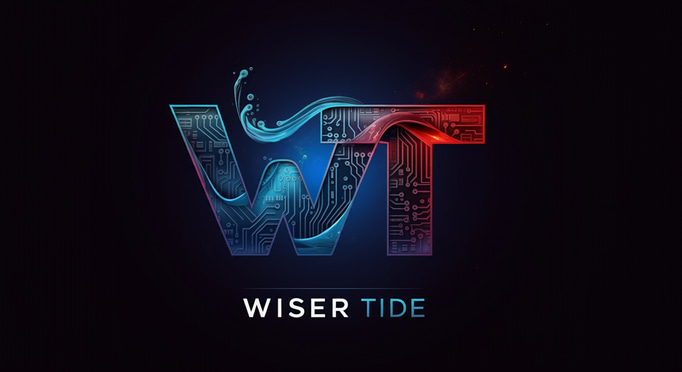Beyond the Hype: Reasons Not To Implement AI In Your Company
Before adopting AI, understand the critical reasons why it might not suit your business, from hidden costs and data challenges to ethical risks and integration hurdles.
AI IN BUSINESS
Wiser Tide
5/6/20259 min read


In countless boardrooms and business articles today, Artificial Intelligence (AI) is being hailed as the transformative power, the essential ingredient for future success. We hear constantly about the efficiencies it unlocks, the insights it provides, and the competitive edge it offers. It's easy to feel a growing pressure, a sense that if you're not integrating AI into your operations now, you're inevitably falling behind. The narrative is compelling, painting a picture of an AI-driven future where everything is smarter, faster, and more profitable.
Yet, amidst this widespread enthusiasm and the seemingly endless stream of success stories, it's crucial to pause and look beyond the hype. While AI holds genuine potential in many areas, it is not a universal panacea, nor is it suitable for every business, every challenge, or every budget. Implementing AI comes with significant complexities, costs, and potential pitfalls that are often overlooked in the rush to adopt the latest technology.
This post isn't about dismissing AI entirely, but about offering a necessary counter-perspective. We'll explore the critical, often understated reasons why implementing AI might not be the right move for your company, at least not yet. Understanding these potential drawbacks is vital for making informed decisions that truly serve your business's best interests, rather than simply following a trend.
The True Cost of AI Implementation (It's Not Just Software)
When businesses first consider AI, they often look at the headline cost of the software or platform itself. Perhaps a monthly subscription fee, or a significant one-off purchase. However, fixating solely on this figure is like budgeting for a car by only considering the showroom price – you're missing a vast number of other essential expenditures. The true cost of implementing AI in your business is significantly more complex and often far higher than initially anticipated.
Think about the infrastructure needed to support AI. These systems typically require substantial computing power, often involving specialised hardware or significant cloud computing resources. Integrating AI with your existing databases, legacy systems, and operational workflows is rarely a simple, plug-and-play exercise. It often demands considerable development effort, potentially requiring costly APIs or custom middleware to get different systems speaking to each other effectively. You might find yourself needing to upgrade existing IT infrastructure just to cope with the demands of the new AI tools.
Beyond the hardware and integration lie the people costs. Successfully implementing and managing AI requires specific expertise. This isn't just about having IT support; you'll likely need data scientists to build or fine-tune models, AI engineers to deploy and maintain them, and possibly data analysts to interpret the results and ensure they align with business goals. These are highly skilled roles that command significant salaries, and finding qualified individuals can be a challenge in itself. Training existing staff to work alongside AI systems and understand their outputs also represents an investment in time and resources.
Furthermore, there are the ongoing operational costs that extend far beyond the initial setup. Maintaining AI models requires regular updates, recalibration as new data arrives or business needs change, and continuous monitoring to ensure performance doesn't degrade. Cloud computing costs can escalate based on usage, and energy consumption for on-premise AI infrastructure can be substantial. These aren't one-off payments but recurring expenditures that need to be factored into long-term budgets.
Crucially, you must also consider the potential cost of failure. Not all AI projects succeed. Poor data, flawed algorithms, inadequate integration, or a lack of clear objectives can all lead to an AI system that doesn't deliver the promised value. The resources – time, money, and effort – invested in such a project can become a sunk cost, representing a significant financial loss that a business, particularly a smaller one, might struggle to absorb. Understanding that AI implementation is a complex project with inherent risks, not just a simple software installation, is the first critical step in appreciating its true cost.
Data Dependency and Quality Challenges
AI systems are often described as intelligent, but their intelligence is fundamentally different from human cognition. At their core, most AI models are sophisticated pattern-matching engines that learn from data. This brings us to another critical reason why implementing AI might be problematic: its absolute reliance on data, and specifically, high-quality data.
Think of AI as a student who can only learn from the textbooks you give them. If the textbooks are incomplete, inaccurate, or misleading, the student's knowledge will be flawed. Similarly, an AI system is only as effective, reliable, and insightful as the data it is trained on and uses for predictions or decisions. This presents a significant hurdle for many businesses.
Acquiring the vast amounts of data needed to train robust AI models can be a challenge in itself. Data might be scattered across different systems, stored in incompatible formats, or simply not collected in sufficient volume or detail. Even when data is available, it very often needs extensive cleaning and preparation. This involves identifying and correcting errors, handling missing values, standardising formats, and ensuring consistency – a painstaking and time-consuming process that requires considerable effort and expertise. Data scientists report spending a large proportion of their time on these data preparation tasks, rather than on building the AI models themselves.
The "garbage in, garbage out" principle is acutely relevant here. If your data is inaccurate, biased, incomplete, or irrelevant, the AI system built upon it will inevitably produce flawed or unreliable outputs. This can lead to incorrect predictions, poor decisions, and automated processes that don't function as expected, potentially causing more problems than they solve. Maintaining data quality isn't a one-off task either; data streams are continuous, and ongoing efforts are needed to ensure the data remains accurate and relevant over time. Without a solid foundation of high-quality data, the promise of AI remains just that – a promise you can't reliably fulfil.
Navigating Ethical Minefields and Bias
Beyond the technical and financial hurdles, implementing AI can steer a business into complex ethical territory. One of the most significant concerns is the issue of bias. AI systems learn from historical data, and if that data reflects existing societal biases – whether related to gender, race, age, or socioeconomic status – the AI will not only learn these biases but can also perpetuate and even amplify them in its decisions.
Imagine using an AI system to screen job applications, trained on historical hiring data where a particular demographic was unintentionally favoured. The AI could learn to unfairly deprioritise qualified candidates from underrepresented groups, embedding discrimination into your hiring process. Similarly, AI used in lending or insurance could potentially lead to unfair outcomes based on biased patterns in past data, regardless of individual merit or risk. Addressing and mitigating these biases requires careful data scrutiny, algorithm design, and ongoing monitoring, which is often difficult and resource-intensive.
Another ethical challenge is the "black box" problem. Many advanced AI models, particularly deep learning systems, are so complex that it can be incredibly difficult, sometimes impossible, to understand exactly why they arrived at a particular decision or prediction. This lack of transparency can be problematic in situations where accountability is crucial. If an AI makes a critical error, or a decision that is challenged (perhaps legally or ethically), explaining the rationale behind it can be exceedingly difficult without clear insight into its internal workings. This lack of explainability erodes trust and makes it hard to diagnose and fix problems.
Moreover, the application of AI raises broader ethical questions. How is customer data being used? Are individuals being profiled in ways they aren't aware of or haven't consented to? Is the AI being used to manipulate behaviour? While AI offers powerful capabilities, businesses have a responsibility to consider the ethical implications of their AI deployments and ensure they align with societal values and regulatory requirements. Ignoring these ethical considerations can lead not only to negative societal impacts but also significant reputational damage and legal consequences for the business itself.
Security Risks and Data Privacy Concerns
Implementing AI often means dealing with vast quantities of data, some of which may be highly sensitive. This immediately raises significant security and data privacy concerns that businesses must grapple with. Introducing new AI systems can inherently expand your digital attack surface, creating new potential entry points for cyber threats.
AI models themselves can be vulnerable to attacks. Malicious actors might attempt to poison the data used to train an AI, causing it to learn incorrect or harmful behaviours (data poisoning). Alternatively, they could craft adversarial inputs designed to trick a deployed AI system into making errors or behaving in unexpected ways (adversarial attacks). Protecting your AI infrastructure and models requires specialised security measures and constant vigilance, adding another layer of complexity and cost to your operations.
Furthermore, the sheer volume and often sensitive nature of the data required to train and operate AI systems present a significant privacy risk. Handling customer data, personal information, or proprietary business data within AI workflows demands stringent security protocols to prevent breaches. A data breach involving data used by or generated from an AI system could have devastating consequences, including hefty fines, reputational damage, and a complete loss of customer trust.
Navigating the complex landscape of data privacy regulations, such as the GDPR in the UK and Europes AI EU Act, becomes even more challenging with AI. Ensuring that your AI initiatives comply with these regulations – particularly regarding data collection, consent, transparency in automated decision-making, and data subject rights – requires careful legal and technical consideration. Simply adopting an AI tool without a clear understanding of its data handling practices and how they align with privacy laws is a risky gamble that could lead to significant legal repercussions. The responsibility for data security and privacy ultimately rests with the business, and integrating AI necessitates a robust and proactive approach to safeguarding sensitive information.
The Challenge of Integration and Change Management
Implementing AI isn't just about installing software; it's about integrating a new capability into the very fabric of your business operations. This process is often far more complex and disruptive than many anticipate, presenting significant integration and change management challenges.
Getting a new AI system to talk seamlessly with your existing IT infrastructure – from CRM systems and databases to legacy software that's been in place for years – can be a significant technical hurdle. Simply getting the data flowing correctly and ensuring the AI's outputs can be actioned within current workflows often requires considerable custom development and configuration. It's rarely a case of simply plugging in a new tool and watching it work instantly with everything else you use. This technical integration piece can be time-consuming, expensive, and may reveal unforeseen incompatibilities that stall the entire project.
However, the technical side is often only half the battle. Perhaps the greater challenge lies in managing the human element and the organisational change that AI implementation necessitates. Employees may feel anxious about how AI will impact their roles, fearing job displacement or the need to learn entirely new ways of working. Without clear communication, proper training, and reassurance, this can lead to resistance, decreased morale, and a reluctance to adopt the new tools effectively.
Integrating AI successfully requires buy-in from the people who will be using it or working alongside it daily. This means not just providing technical training but also helping employees understand the AI's purpose, its limitations, and how it can augment, rather than simply replace, their skills. It requires a thoughtful approach to change management, addressing concerns empathetically and demonstrating the value of the AI in a way that resonates with the workforce. Ultimately, AI isn't a magic bullet that operates in a vacuum; its success is heavily reliant on how well it is integrated into existing human workflows and how effectively the organisation adapts to working in tandem with intelligent systems. This level of organisational adaptation is a project in itself and shouldn't be underestimated.
Over-Reliance and Loss of Human Judgement
The impressive capabilities of AI can sometimes lead to a dangerous tendency: over-reliance. When an AI system consistently provides accurate predictions or efficient automation, it's easy to start blindly trusting its outputs without critical human oversight. However, AI lacks the nuanced understanding, intuition, and contextual awareness that human judgement provides, and this over-reliance can lead to significant problems.
AI systems are trained on historical data and perform best when dealing with patterns and scenarios they have encountered before. They can struggle significantly when faced with novel situations, unexpected variables, or circumstances that deviate from their training data. A human expert, on the other hand, can draw upon a wealth of experience, apply common sense, and understand the broader context to navigate unforeseen challenges. Relying solely on an AI in such situations can lead to errors, missed opportunities, or inappropriate responses.
Moreover, constantly deferring to AI for decisions, analysis, or task execution carries the risk of eroding human skills. If employees stop performing certain tasks because an AI does them, they may lose the critical thinking, problem-solving abilities, and domain expertise associated with those tasks. This deskilling can make the organisation vulnerable if the AI system fails, needs troubleshooting, or needs to be adapted. Maintaining a balance where AI augments human capabilities rather than completely replacing them is crucial for long-term resilience and innovation.
Ultimately, AI is a tool, and like any powerful tool, it needs skilled human operators who understand its strengths and, crucially, its limitations. Ceding critical decision-making entirely to an algorithm without maintaining a layer of human judgement, intuition, and ethical consideration is a significant risk that businesses should be very wary of taking. The human element remains irreplaceable in navigating complexity, exercising empathy, and making value-based decisions that go beyond pure data analysis.
Takeaways
Implementing AI involves significant hidden costs beyond just software fees, including infrastructure, integration, and staffing. High-quality data is paramount, and the challenges of data acquisition, cleaning, and maintenance can easily derail AI initiatives. Businesses must navigate complex ethical considerations and potential biases in AI, alongside substantial data security and privacy risks. Successful AI adoption relies heavily on overcoming integration hurdles and effectively managing organisational change and potential over-reliance on algorithms.
Connect
Empowering local businesses through tailored AI solutions.
Innovate
Transform
07543 809686
© 2025. All rights reserved.


